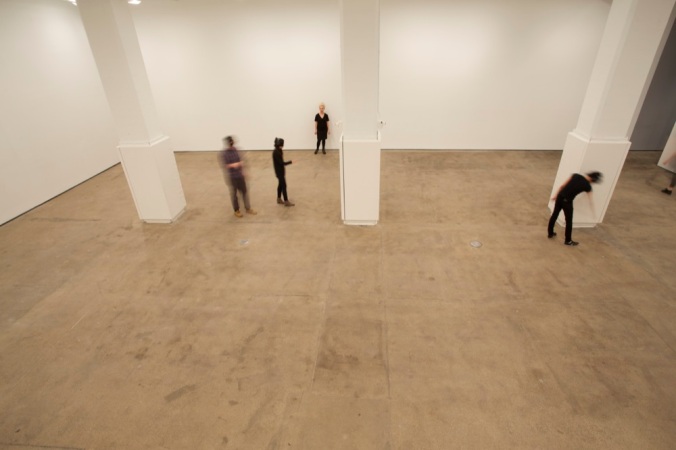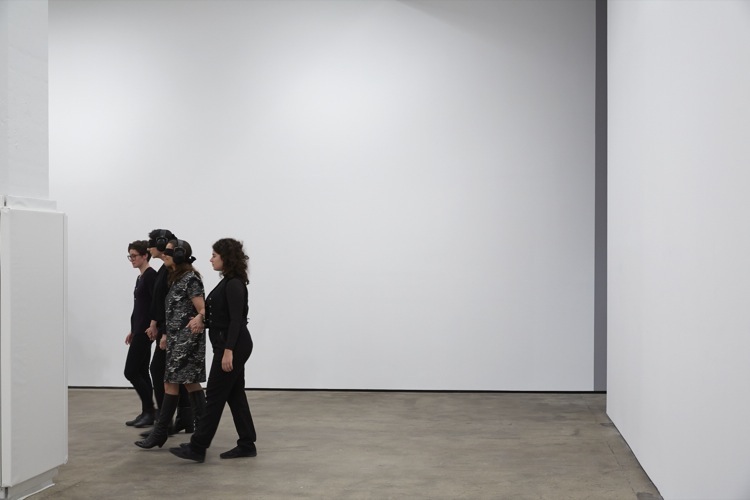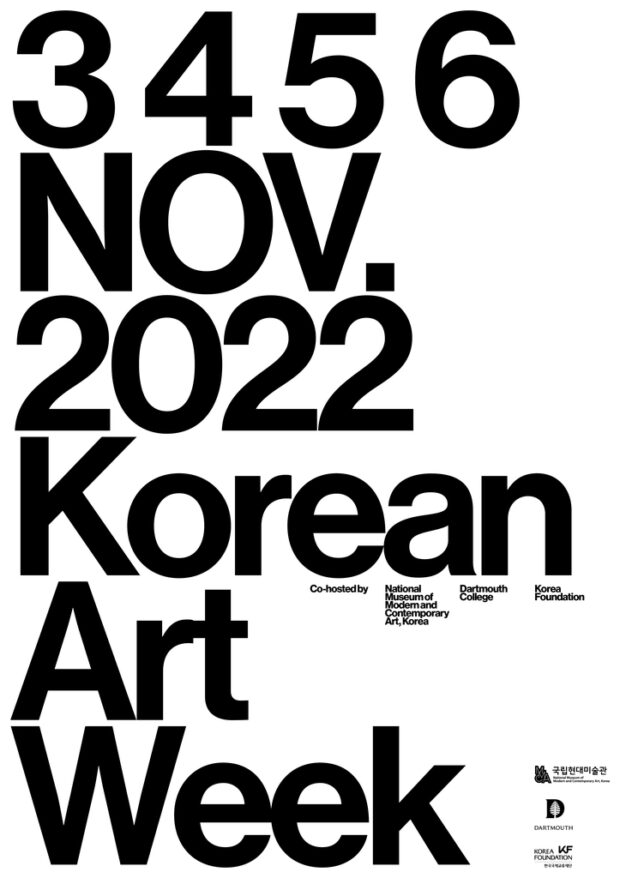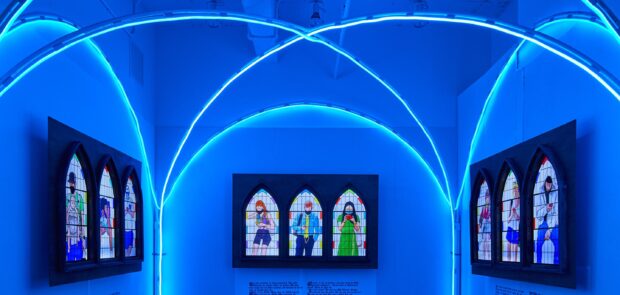Marina Abramović is back in New York City, but this time, she won’t be seen. On her last visit, Abramović performed The Artist is Present (2010) for the blockbuster MoMA retrospective of the same name. For 736 hours and 30 minutes, Abramović sat immobile in MoMA’s atrium faced, one by one, by silent visitors. Most recently, she spent 512 hours at the Serpentine Gallery, guiding visitors through an empty space and occasionally presenting them with an everyday object.

Now, at Sean Kelly Gallery, Abramović’s Generator—a participatory work that focuses on “nothingness” and sensory deprivation—is on view (through December 6, 2014). Facilitators place blindfolds and noise-cancelling headphones on participants before leading them into the main gallery. Once inside, participants can move however they want (though told it is a “slow-moving” piece), touch whatever they want, and stay as long as they want. When ready to leave, the blindfolded raise their hands and a facilitator guides them out. Every movement is documented and presented on Tumblr; this aspect of the piece, however, only becomes apprehensible once outside the space, in front of a computer screen. During the exhibition’s run, Abramović will partake, too—unannounced and daily—but, of course, participants will not be aware of her presence.

Prior to entering the gallery, participants must give up their belongings. It is a physical and material trade, echoing Abramović’s artist statement that sits above a bench: “It took me 25 years to have the courage, the concentration and the knowledge to come to this, the idea that there would be art without any objects, solely an exchange between the performer and the public.” In exchange for my things, I was given a blindfold and headphones. But another transaction occurred simultaneously: no longer in possession of my eyesight or hearing, I felt an emotional exchange, one more closely tied to the artist. I placed my trust in Abramović in order to gain an experience (or was it a work of art?).

As a facilitator guided me into the room, the experience felt one-sided. The facilitator knew more than I did: what the space looked like and where I was headed. But it wasn’t as though I couldn’t conjure the gallery in my mind. I had done my own research before venturing to Sean Kelly’s pocket of Hell’s Kitchen, scrolling through dozens of images on the Generator’s Tumblr, trying to “prep” myself for this experience. I knew the gallery’s shape and size, but without being able to see it, I couldn’t be entirely sure. I felt my initial trust slipping away. In my inability to give Abramović and her facilitators total confidence, I wondered: was I failing on my part of the exchange?

This lack of trust compelled me to act differently—strangely—in the space; my movements felt performative. My actions became unusually apparent. As I circulated through the room, I slowly waved my arms, palms out, and began to realize I was performing a dramatic act of “searching.” I was also “reacting” dramatically. When I finally touched a wall, I recoiled; counterintuitive considering the stability and support the gallery wall would have provided. And rather than walking as I would down the street, I picked my legs up slowly and planted them cautiously, as though I was avoiding the edge of a cliff. I knew where I was. I knew the only thing I could encounter would be a wall or another human (harmless objects) and yet I felt the need to “act” in this cautious and caricatured way. I was scared, I realized, and kept thinking: what if this is all a trick?
Absorbed in my own fear and bodily movements, I never felt a true exchange between “the performer and the public,” as Abramović expressed in her artist statement. Her last work in New York City, The Artist is Present, however, more successfully achieved that interpersonal exchange. The works are similar; in both, participants are asked to enter a “safe” space and engage with Abramović. But the difference in The Artist is Present is that Abramović is seen – the title couldn’t make it clearer. Participants lock eyes with Abramović, and in this shared moment, conduct a direct exchange. Her visibility is what made The Artist is Present so powerful. That impact is lost in the Generator, as visitors leave wondering if she was in the space at all.

Throughout the experience, I could still hear the outside world despite my covered ears. Muffled voices in the hallway and sirens passing in the streets infiltrated my headphones. If I tried, I could see around and through my blindfold: tiny dots of light, a sliver of my shoes, the concrete floor. Before entering the main gallery, I was told several times that this would be a sensory depriving experience. And in theory, it should have been. But during my time at Sean Kelly, neither my sense of sight nor hearing fully failed me.
Several of Abramović’s peers also produce work aimed at achieving sensory deprivation. James Turrell creates total and immersive ganzfelds, in which participants must step into visual fields of homogenous color that render the eyes incapable of holding onto space. Depth perception is literally gone—participants cannot see a wall even as they stare directly at it, nor can they sense how far to reach out to touch it. The result is a loss of balance and complete disorientation: stepping out of a Turrell ganzfeld requires patience. But the case is different in Abramović’s Generator. When I was ready to leave, I simply raised my hand. A facilitator found me and escorted me out; her touch immediately calmed my fear and I ceased focusing on my body and movements. I walked with her into the hallway, where she took off my headphones and untied my blindfold. I went to my locker to grab my things; I didn’t need much time to regain my composure. Disappointingly, the sights and sounds of the city felt just as they had before entering Generator. It was a seamless transition back to reality.






Be First to Comment